-
Posts
96 -
Joined
-
Last visited
-
Days Won
44
Nouveau last won the day on June 5
Nouveau had the most liked content!
About Nouveau

- Birthday July 2
Profile Information
-
Gender
Male
-
Location
Taxes be high yet life still kinda sucks
-
Interests
Iced tea, sunflower seeds, history documentaries, and anything that requires lots of attention to detail.
Nouveau's Achievements

Advanced Member (3/3)
333
Reputation
-
The Deep Dive An ONRP Radio Series presents June 4th, 1425 The Six Pillars A Deep Dive into Nouveauterran Political History and the Future Hosted by Yorick Van Der Beek and Dawood Van Rees Chapter 1: The Foundation YORICK: Nouveauterra is at a major crossroads unlike anything it has faced ever before. New found attention from hosting the Esferos Economic Expo, intervention in the Candelu Civil War to the north, spearheading the expansion of the GECA, and combining efforts with other leaders for ocean protection while trying to expand undersea mining and industry. DAWOOD: The nation’s parties now have a complex task of balancing the desires of the people, the government’s in-built expertise, and the nation’s resources towards a better future. At the heart of this effort are the six political parties which work to make their mark on the nation and in history. YORICK: The parties cover a broad swath of ideologies. Les Gens des Collines want a higher level of regional and personal autonomy from the government, while La Ligue Populaire wants a more comprehensive government safety net and an expansion of government control over certain markets, like food or medicine. Le Parti de la Patrie has openly stated that they want to reduce the number of foreign worker and student visas to, “promote domestic prosperity,” and that social safety nets are a net negative to society. Although these parties have few representatives, their presence has influenced les forces majeures, conservative Ligue de l'Accord, and liberal La Sécurité Sociale. DAWOOD: Before we begin this series in ernest, we need to establish important context for why these political parties are structured the way they are, and how laws dating back to La Guerre Civil still play out today. History YORICK: La Guerre Civil tore the country apart with bloodshed and chaos from 1254 to 1259. The Roues and the Lyonnaires came to a mutual peace in 1259 on Ile des Sirènes. As part of that peace, the political parties that had been a part of the social order before the war were legally disbanded. New parties could form, but the many positions of government that were used as prizes for political support were professionalized under Le système professionnel de l'État civil, better known as the civil service system. These political parties were also mandated to publicly disclose their financing, since the Lyonnaires had used the war chest of the République Démocratique party to fund their revolution. And the proverbial cherry on top; political parties would be legal to form in the year 1290. The peace planners believed that maybe if everyone who participated had passed away, the old grudges would go with them too. DAWOOD: All of these factors would contribute to a tumultuous time known as The Party-less Era. The Party-less Era YORICK: Some believe that political parties being banned meant the death of organized politics. That couldn’t be further from the truth. Secret parties formed throughout the country, attempting to influence voting and politics through covert activities, organizing, and in some cases murder. The time between 1260 and 1300 would see many political actors and careers rise and fall. Because of the secret nature of these parties, we can only gleam so much. But here are some parties and activities we do know about. One of the first secret parties to form was Der Jägerbund, or The Hunting Party. The Hunting Party formed in a hunting lodge in the state of Pics Rouges near the end of 1260. They were made up of former revolutionaries who had escaped imprisonment. They formed under the belief that the way to political power was through subversive actions. The Hunting Party would attempt this for years, by aligning themselves with local politicians in the areas of the old revolution. They gained followers in Pics Rouges, Champvert, Ferme, and Mare de Sang through public speeches, forums, and their most popular pamphlet, The Voice of Reason. This included business people, representatives, and local people. Their actions culminated in a deadly clash in 1262 with a siege of the Pics Rouges Regnal House, where nearly 84 people died, and 102 were wounded. The Hunting Party survivors were prosecuted the subsequent year and sentenced to death as rebels. DAWOOD: Another revolution-aligned party was The Brotherhood, formed in 1261. Although they’d have similar goals as The Hunting Party, they attempted to stay covert for a much longer span of time. Their efforts were discovered by the government in 1263, and led to the first use of an undercover investigator in the nation’s history. The investigation, lasting from 1263 to 1264, uncovered a wide spanning conspiracy to infiltrate the Viriarma, the national police service, and seize power by force. Many conspirators were arrested in late 1264, with most being sentenced to prison. Some were spared as witnesses, while others fled the country to nations like Saint Mark, and Mediobogdum. In contrast to these revolutionary parties was a secessionist group known as The Great Horn. The Great Horn consisted of Danav veterans of the Guerre Civil, and revolutionaries, who believed they had an opportunity to break away from the nation. This was based on the depleted military, with a cash-poor government, and weak territorial control of law enforcement. The Great Horn would coalesce in 1261, and started to make political moves in the ensuing years. YORICK: Although their original aim was secession, they were intercepted by another group, The League of the Oath. The League of the Oath formed at the beginning of 1260, and were composed of generals, government administrators, and like-minded business people. All of them were unified in one mission; destruction of revolutionary thought in Nouveauterra. They had fought in an official capacity against the revolution, but wanted to, “Continue the efforts of national unity beyond the warfront.” DAWOOD: The League of the Oath would use the different offices of government, both through official and unofficial means, to continually undermine the forces that still believed in the revolutionary ideals. Raids on tea houses, extrajudicial killings, and scheming that hamstrung many groups, like The Brotherhood and The Hunting Party. The League of the Oath and The Great Horn are connected, because they would cut a deal in 1268. The deal meant that The Great Horn would stop its secessionist activities, but they would help The League of the Oath in clamping down on secessionists and revolutionaries in the countryside. In return, The League would fight to pass expanded civil rights for the Danav people. YORICK: The two parties, through this deal, would work together towards national unity, and by the 1270s would become the dominant forces in political culture. Wherever secessionist, or revolutionary forces would spring up, the two parties, historically referred to as The National Compact, would squash them down. DAWOOD: The National Compact would operate throughout the 1270s to the 1290s without much interference. The League of the Oath would indeed keep their promises, and assisted in passing land development in Danav areas, as well as civil rights legislation throughout this time. Their pamphlet, La Colombe, was circulated in daily and weekly papers like Le Crieur de Gue, and L'Examinateur Quotidien, to instill republican ideology into the people who read it. This political force would start to lose power by the end of the 1290s. Multiple changes in government, and a new political movement of Responsible Republicans would see the ouster and arrest of League politicians. The Responsible Republicans, born out of racial animosity towards foreign people and Danav people, gathered into a coherent movement by 1296. They were opposed to the rights given to Danav people, such as easier access to voting, land grants and land banks, as well as new developments such as expanded telegraph lines and train routes. The Responsible Republicans’ biggest achievements from 1296 to 1315 were undoing the work of The National Compact, and causing a split in its two constituent parts. YORICK: This long era culminated in The Special Committee on Subversive Organized Groups forming in 1298. The Committee, held in the Upper Assembly, would officially investigate the secretive parties, both for historical purposes, and to get a better sense of their contemporary situation. DAWOOD: The Committee would eventually identify 39 different political parties that had formed and/or disbanded between 1260 and 1298. Some parties were just a handful of people, while others like The League of the Oath would boast over 400,000 official members, at a time when the nation’s population was just cresting 2.5 million people. YORICK: With this context laid out, we can dive into the individual parties that exist today, starting with the oldest; La Ligue de l'Accord.
-
 Nouveau reacted to a post in a topic:
The Pineapple Apparatus - The 1425 Presidential Election
Nouveau reacted to a post in a topic:
The Pineapple Apparatus - The 1425 Presidential Election
-
 Nouveau reacted to a post in a topic:
[ Factbook ] Principality of Säkkia
Nouveau reacted to a post in a topic:
[ Factbook ] Principality of Säkkia
-

Emergency edict no.1 - Viatic Ocean
Nouveau replied to Flauschi918's topic in Roleplay - How the West Was Won
Bureau du Président Citadelle de la République 1000 Rue Hautlieu Pointe-d’Espoir, Trebec 10000-01 République de Nouveauterre --- Transcription of Statement on Harmful Waste Dumping Activities in Viatic Ocean by President Guy Laclare March 3rd, 1425 The United Republics of Fauthur has begun operations to dump hazardous waste into the Viatic Ocean four days ago, according to intelligence shared with us and our own intelligence services. Ships bearing flags of different nations sailed out into international waters, and with the aim of dumping various waste materials in the ocean. It will take considerable time for waste material to drift towards the Nouveauterran coast, on the scale of years. However, this waste material will have catastrophic effects on ocean and human health. Ocean animals often die in direct contact with waste, and struggle to repopulate areas unless extensive cleaning is undertaken. Long term exposure to industrial waste in people can lead to birth defects, increased cancer risk, and overall health decline. The Nouveauterran government unequivocally condemns the dumping of industrial waste undertaken by the United Republics of Fauthur. Esferosians have known for decades that industrial waste must be properly contained in order to protect life. Here are the actions we will take in response to these activities: We support the Kingdom of Zoran, and the Empire of Nalibia, and levy sanctions against the United Republics of Fauthur. These sanctions include: the prohibition of the buying of industrial goods from Fauthur. The prohibition of money transfers involving government owned corporations and government actors involved in dumping, such as the Ministry of National and International Shipping. Lastly, the sanctioning of individual members of government who are integral to the dumping effort. These sanctions include escalator clauses. If the United Republics of Fauthur does not cease dumping activities, further sanctions will be implemented against wider parts of the economy. If the United Republics of Fauthur attempt to use retaliatory tariffs, government acts, and/or sanctions in order to pressure us or our partners into backing down on our policy, we will invoke more sanctions as well as the dissolution of diplomatic ties. A Working Group, composed of the Ministry of the Environment, the Ministry of Homestead and Development, the Coast Guard, and the Ministry of the Navy, will be formed to monitor the situation continually. This Working Group will also perform research and generate plans of action for Nouveauterran communities as well as the government. Their reports, an impact projection, and a national action framework, will be released to the public when they are completed. The United Republics of Fauthur are a persistent trading partner with our nation. Sanctions will negatively affect both nations. But, these sanctions are necessary to show that such a relationship is meaningless if parties take actions that negatively impact the current and future health of one another. If the United Republics of Fauthur continue to dump waste in the ocean in spite of sanctions, we will discuss with our partners on whatever next course of action is necessary for health and national security. Un En Lute -
1425 GECA Regional Development Grants Allocated 1/16/1425 GECA representatives have finalized Regional Development Grant allocations for 1425. RDGs enable member states to apply and receive money for large scale public works projects within the GECA zone. Projects covered by the grant program include: Water, telecommunication, electrical, and transportation infrastructure Buildings to be used for the public good (recreation areas, government offices, art and cultural centers, etc.) Land improvement or modification for public purposes (wave-breakers, soil improvement, tree planting) “Regional development is at the heart of GECA’s mission,” said Marien Ruisseau, press officer for the Regional Development Office. “Every dollar spent goes back to Guldurians in the improved safety, community, and service delivery in their home country.” Final allocation of money for other sectors will be handled at a separate meeting in the future. Here is a listing of projects utilizing RDGs in 1425: The Construction of the Hruumai Medical University: Link
-
Tabling for a Private Company Assurance des Colons (Pioneer Insurance Company) Assurance des Colons (AdC) is one of the major insurance companies within Nouveauterra. AdC formed in 1340 when Louis Colline and Andres Lambert wanted to insure cars and motorcycles in rural Nouveauterra. The low-price insurance became popular, and through the acquisition of Santé Intérieure, a health insurance company, AdC acquired the necessary licenses to issue health insurance. AdC is the only full-circle insurance corporation in Nouveauterra, providing health, home, auto, business, pet, and life insurance. Many medium to small sized businesses negotiate bundles with AdC because of the affordable access to many options of insurance. AdC also provides special discounts for government workers, active and former military members, and emergency service workers (nurses, police officers, firefighters, etc.). As part of the company's commitment to social, AdC performs research to explore challenges in healthcare in Nouveauterra, and economic policies that impact the public. A member of AdC will give a talk on rural healthcare as part of the Speaker Series.
-
Tabling for a Private Company Serin Dispositifs Médicaux formed in 1373 from a group of doctors, engineers, and venture capitalists who saw a growing continental need for medical equipment. Founded and still headquartered in Ruisseau Rouge, Mare de Sang, Serin’s continent spanning corporation provides many pieces of medical equipment, and maintenance services. Their product range: ECG machines Anesthesia masks Blood oxygen monitoring equipment Dialysis machines Oxygen pumps and many more! Serin has also recently gone into business selling heart monitoring and fall detection equipment for elderly customers through Serin à la Maison (often shortened to Serin Maison). Their wristwatch (Compagnon) and their wearable simple phone (Gardien) connect subscribers to a nationwide network of emergency call centers. These connections enable a Serin operator to request medical assistance once certain criteria are met. These include: a detected fall without a call cancellation, evidence of heart attack, a tachycardia event, or a direct request from the subscriber. Learn more at serindispositifs.com
-
Tabling for a Government Authority Nouveauterra’s Ministère de la Santé (Ministry of Health) has a broad mandate which includes: Monitoring diseases, studying the health of the nation, and making best-practice guidance for healthcare providers and health networks. One of the bureaus under the Ministry’s control is the Bureau of Citizen’s Medical Care (BSMC). The BSMC was formed in 1409 during the administration of President Cico Pantera. The BSMC’s mission, along with the bill that created it (the Comprehensive Pauper’s Healthcare Intervention Note), was to provide health insurance to the poor, and access to complex medical care for those who otherwise couldn’t afford it. Before 1409, health insurance in Nouveauterra was strictly through private insurers. Government workers could enroll in discounted packages through the state, but there was no public option. Medical care was either paid by the patient, an insurer, a negotiated payment with the previous two, or in rare cases waived entirely. The cultural movement that spearheaded the creation of the BSMC was the death of Flora Tireur in 1408. Flora Tireur was a 23-year-old line worker at Entreprise Automobile de Routier in Andreosia, De Rek. Tireur began to experience a rapid onset of severe symptoms, and her general doctor discovered it was ovarian cancer. Tireur’s private insurance through her employer could only cover part of the expensive treatment necessary to save her life. Tireur faced the choice of either crippling debt or death from rapidly evolving cancer. An online fundraiser spread, but by the time it met its quota Tireur had passed away from gastrointestinal cancer that had spread from her ovaries. After lawmakers and activists campaigned, the CPHIN was passed by a majority of the Grand Assembly. The BSMC of today has two main programs, the Affordable Health Insurance Corporation, and the Board for Medical Intervention. The Corporation intakes money from companies through taxes, and very small payments from customers, and uses the money to cover for medical care at any medical facility in the nation. Part of the CPHIN included a requirement that medical institutions and care centers must take BSMC insurance in order to continue receiving grants for other programs (such as disease prevention). Citizens can submit an application and if they have a low enough income, they can qualify for insurance. The Board for Medical Intervention reviews cases submitted to them through patients and healthcare providers. These cases must describe the treatment deemed necessary, the cost, and the reasoning for why the Board should grant funds for the treatment. The Board is often called upon for novel yet expensive treatments, as well as treatment for compound illnesses (multi-organ cancers, complex brain trauma, etc.). Although there are critics of the BSMC, it enjoys widespread enrollment in the country, insuring over half of the nation’s citizens. Children are also automatically enrolled in the Corporation healthcare scheme for free when they enroll in school, removing the extra cost of healthcare for parents. You can learn more about services and programs at the public website, bureaumedicauxcitoyen.no.
-
"Hello, I am Actius Veres, Interim President of the Global Health Coalition." "Welcome to the 1424 GHC Summit! We’re glad you could join us. Have a look at the tables for our coalition members, and pop in for our speaker series and round table events in the Van Dijk Auditorium. Don’t forget to follow us on social media, and take a brochure while you’re at it. We at the Coalition hope you learn a lot from our summit, and that what you learn contributes to a better global health landscape." OOC: This is the start of the RP, I hope you guys enjoy it!
-
The Host City of Ruisseau Rouge Left, a photo of the Jolly Swamp Raker Statue Right, an aerial photo of Ruisseau Rouge focusing on the neighborhood of La Escapade Ruisseau Rouge, the seat of power for the state of Mare de Sang, has a population of 520,144. The slow-paced small city has had little development in recent years, as the northern region undergoes major changes to its economy. Ruisseau Rouge was an intersection for major railway lines used to service heavy industry further north in the early 1300s. As northern industries changed, the necessity for rail interchanges changed too. The primary use of these rail interchanges is for commercial goods heading for the members of the Doll Guldur Economic Agreement (GECA), and foreign goods coming south to the major cities. The most active part of the city is the Market District, home to the Jolly Swamp Raker. The Jolly Swamp Raker was a previously unnamed statue commissioned by the first city council in 1251. Built to commemorate the founding of the city, the statue moved locations several times before the city settled on creating a fountain, and setting the statue within it in 1258. The state and federal government are the largest employers in the city. These employers include: Université Nationale à Ruisseau Rouge, Hôpital Universitaire Tombeau, the Collège de Médecine de Guerre, and the Viriarma federal police (through its Department Nord headquarters). The largest private employers of the city include Société Électrique de Grand Sang, Mare de Sang and the northern region’s largest energy provider, Serin Dispositifs Médicaux, a medical equipment manufacturer, and Société de Crédit Lansier, an investment bank. OOC: The Summit begins next week Sunday, November 3rd. An opening message will be released on the 3rd, and posters can begin posting. Thanks in advance to everyone who writes for the event. I'm excited to see what people post.❤️
-
More about Hôpital Universitaire Tombeau Hôpital Universitaire Tombeau (Tombeau University Hospital) Hôpital Universitaire Tombeau was founded in 1235 by Marcelle Fullo Tombeau, a wealthy physician in the then northern territories controlled by the national government. Tombeau was a military doctor, who saw that many settlers didn’t have proper medical care, and had to beg army physicians for surgeries. Marcelle Fullo Tombeau, painted by Henri Van Slyck, 1256 Tombeau created HUT in a two room brick walled wine press building. HUT was initially called l'Hôpital du Pauvre Voyageur. Funding was tight, and came from donations from friends, and donors who would mail donations through word of mouth, or almanac advertisements. Medical care was free, or extremely discounted (sometimes called penny exams). The Original HUT building found in 1386, before it was restored as a historical site A vicious winter in 1248 left many people injured, and the free medical care provided by HUT drew the attention of the committees forming the state of Mare de Sang. HUT gained a state charter in 1250, and has been a state funded medical institution ever since. The teaching function of the hospital began in 1255. It began to take in students, have a curriculum, and certify physicians. the modern HUT campus in the heart of Ruisseau Rouge To date HUT handles the highest volume of severe illness cases in the northern region. HUT has a full service burn-unit, intensive care unit, and epidemiology unit, among other specialty services. HUT’s 9000 staff, students, visiting physicians, and affiliated out-patient specialists play a major role in the overall health of the northern region. OOC: Official event begins Nov.3, stay tuned for updates
-

halloween Chienoir, a Short Story in Nouveauterra
Nouveau replied to Nouveau's topic in Roleplay - How the West Was Won
Part 3 Darkness consumed the landscape, except for the few streetlights in the center of town, and The Longhouse on the main road. The all purpose trucking oasis and gas station at the edge of town was well lit, with a wide neon sign on a tall steel pole. In a corner of the large lot, away from the resting trucks, was Leon leaning on his sedan. Leon zipped up his coat and kept his hands in his pockets. An old white truck with chipped paint slowly came into the parking area. It slowed down near Leon and the window rolled down. “Stay close to my tail, we’ll have our lights back on when we hit Rue de la Fête.” Leon got in his car and followed Marcelle out of The Longhouse parking lot, down a packed dirt service road, and towards the desert. Stars and mountain tops were the only visible entities. The moon was asleep as well. Leon drove, watching the white pickup as it rumbled over stones, and unpacked earth. Leon backed away from Marcelle’s car. Leon’s windows were kept down in the hopes of hearing something from Marcelle, but all he got were diesel fumes. Marcelle turned on his car’s lights, and Leon did too. Leon looked to see a small box on a wooden pole. When they drew within a stone’s throw of the mailbox they both stopped and turned off their cars. Marcelle and Leon got out of their cars and walked on the sand. Marcelle held up a hand. He crept forward, and came to stairs in the earth. They both descended the stone steps and came to a wood door. “Quies,” Marcelle said. “It’s Marcelle.” An old metal lock turned, and the door opened. A woman with dark hair and tanned skin opened the door. She was adorned in many beads, bracelets, and a gold chain. Her hair was half concealed in a thin skull-wrap. “I smell death,” Quies said. The door began to close until Marcelle’s boot stuck in the doorway. “You don’t want to hear what I have to say.” “I’m here because you’re all I have left,” Marcelle said. Quies let out a short sigh and opened the door. Leon and Marcelle walked in and sat at a small table in the dim kitchen. Quies sat opposite from them. “I know you two are in deep trouble,” Quies said. “I can sense it from the water of the spirits. Five people too many have died. Black dogs are in every shadow, every rise and fall in the land.” “We know. We’ve seen them.” Marcelle said. Leon raised his hand, but Marcelle raised his quicker. “What do we do now?” Leon shook his head. “I can’t tell you,” Quies said. Marcelle grabbed Quies’ hands as tears grew in her eyes. Footsteps echoed above their heads. Leon rose to his feet, with his pistol held high. Marcelle and Quies sat together at the table. “One by one,” Quies mumbled. Snarls crept in through the walls, and heavy breaths chilled Leon’s spine. “Until they’re satisfied.” “I remember, one must make amends, so to speak,” Marcelle said. Quies looked up. “It’s a price you cannot pay,” Quies said. Marcelle drew closer and hugged Quies. He let out a short chuckle. “Maybe if I had listened to you and we ran away,” Marcelle said. “We’d be happy in Saint Mark. Eating pickled plum.” Marcelle gave a small laugh. Quies did too, through tears. “We were kids. Breaking the law always sounds fun. But disappointing our parents wasn’t an option,” Quies said. “Maybe it’s fate that we would be here like this.” “Am I losing my mind!?” Leon yelled as we walked towards the door and aimed his pistol at it. Marcelle let go of Quies. “Go to Felix,” Quies said. “Beg and pray. That is all you can do. Maybe they will have mercy, but I’ve never seen it.” Marcelle leaned over the table and gave a kiss to Quies’ forehead. “This may be goodbye. I hope to see you in the waves of the sky, caros.” “I hope to see you there too,” Marcelle said. He turned on his heel and rose up. “We have to get to Monture d’Or.” Marcelle drew his pistol from his pocket and leapt to the front door. Marcelle and Leon gave each other a quick nod. Marcelle threw open the door. Both men came out the door with guns drawn. They hurried up the stairs and to their vehicles. They turned them on and began to fly towards the road. Leon drove with his shoulders high and his windows rolled up. Shoulders and snouts and fangs faded in and out of the darkness. A snarl or a bark would catch his ear and he’d twitch to one side. Figures in the distance would disappear, only reappear at a moment’s notice. The two men followed the dark road, and headed towards the small outpost in the darkness. Monture d’Or. A free, public hospital in disrepair. Only one floor tall with a couple dim lights illuminating the brick walled building. It somehow didn’t grow brighter as the two cars approached it. Marcelle and Leon screeched their cars into the parking lot, and jumped out of them. They ran through the front door, howls and the gnashing of teeth on their heels. The waiting room had a few short metal benches, and a wide desk at the other end. Marcelle and Leon came up to the desk, and a heavy set man looked up at them. “We’re with the Viriarma,” Marcelle said. “We need-” the nurse spoke up. “Thank the gods you’re here,” the nurse said. “Maybe you can shoot some of those wild dogs out there. They’ve been driving me nuts.” Marcelle leaned over the table. “Where is Felix Nauta?” Marcelle said. The nurse’s eyes widened. “He’s down that hallway to the right,” the nurse said. “110.” Marcelle and Leon ran down the hallway with guns drawn. Past stained linoleum and dingy walls. Around the corner, and to the only partly lit room. Marcelle and Leon entered the room to Felix. He was covered in a bedsheet from his hips down. An IV in his arm, and a heart monitor on his finger. “I didn’t think I’d see you two here,” Felix said. He coughed and his heart rate spiked for a moment. Marcelle grabbed the seat by the door, and brought it closer. “Let’s say, some circumstances brought us here,” Marcelle said. Felix laughed. “Circumstances,” Felix said. He shook his head and relaxed his body. Felix pointed at Leon, who stood by the door. “Who needs enemies when you have friends like these, right?” Felix coughed again, and Marcelle looked away. “I wasn’t trying to hurt you,” Leon said. “I was just trying to stop that jackass.” Felix slammed his fist, and the beeps of his monitor jumped up. “And you covered it up,” Felix said, pointing to Marcelle. “You put ‘not service related’ on my report. Because you coded it like that, my health insurance won’t cover the full cost. I’ll be paying debts for this surgery for years. I don’t even know if they’ll let me serve again.” Marcelle let out a deep sigh. He looked up at Felix. “I couldn’t lose two peritus in one go,” Marcelle said. “I couldn’t.” “You could’ve said it was the guy’s gun. Or hell, that it was a piece of the truck from yanking him out that rust bucket,” Felix said. “No, you just wanted it under the rug. The funniest thing.” Felix pointed at Marcelle. “They couldn’t get the fragment out. Now there’s a piece of copper a hair away from my heart, and one day it could breach it. I’m fucked!” Felix laid back in his bed and stared at the ceiling. Marcelle clasped his hands together. “For the sake of the town,” Marcelle said. “The people. Your family, our families. Would you forgive us?” Felix looked over at Marcelle. “Are you even sorry for what you did?” Felix asked. Leon looked over for a moment. “I had to shoot him,” Leon said. “I did what I had to do. He was gonna kick your ass.” “There’s your answer, Dux Princeps,” Felix said. “You deserve everything that’s coming to you. Everything. Get out of my room.” Felix relaxed on the bed and turned his head away. Marcelle balled up his fist and inhaled deep into his lungs. He stood up. His eyes were planted on Leon, who gave back an expressionless stare. Marcelle walked towards the door with his eyes relaxed. Leon followed Marcelle down the hallway. They came out of the lobby and to the front of the hospital. Marcelle lit up a cigarette once again. Leon turned to Marcelle. “What is a chienoir?” Leon asked. Marcelle shook his head. “The Danav people tell stories of these dogs from long ago,” Marcelle said. “If a member of a group betrayed someone, and left them to die in the wilderness, the spirit of the air would guard their soul. But dogs would come to feast on those who betrayed them. Some say it’s a folk story to stop wickedness. If you betray your brother the chienoir would come for you.” “But, if those dogs in the road, or in Goede’s house are real,” Leon said. He cut himself short. “I told you it was no fairytale, boy,” Marcelle said. “They’re surrounding us right now! You couldn’t even repent for a moment to save your skin! Now the dogs will never leave. They will eat us.” Marcelle threw down his cigarette in anger. “So what now?” Leon said. Marcelle started walking to his car. “Say your last prayers, and die quickly,” Marcelle said. “Go into the wilderness, and let the dogs consume you. That is all that is left for us.” Marcelle began to walk. “Where are you going?!” Leon shouted with a hoarse voice. Marcelle stopped and turned back. “I’m going to my beloved,” Marcelle said. “To truly say goodbye one last time. That’s if I even make it. I’d be cautious if I were driving far. Their presence tends to make people sleepy when they’re traveling far. Just go home and say goodbye.” “I’m not doing that shit!” Leon shouted. “I’m getting out of here!” Leon ran for his car and jumped inside. He slammed the door. Marcelle watched in awe as Leon’s car sped away. Marcelle got in his truck and opened a brick-like laptop. The laptop had a page open. It was an incident form. Marcelle dragged the document to an email draft, and began typing. To Hoog Department Viriarma Human Resources, My apologies for the late email, but I need a change order for incident report DH14140815 Attachment F, regarding Peritus Felix Nauta. In previous documentation, I listed Peritus Nauta’s injury as not being directly related to service. However, after further investigation, myself and office staff determined the injury was sustained during service. Please adjust this report accordingly, and forward updated documentation to Peritus Nauta. Sincerely, Dux Princeps Marcelle Cordonnier Officer-in-Charge of Antonville-Hercus Zone Marcelle hit send on the email, and closed the laptop with a quiet sigh. He began to babble to himself as he turned the truck on, “Forgive a fool like me, gods above. I put myself above others, when people who’ve built me up in my life have done the opposite. I know my sins are many, and deep. I’ve held secrets, killed honest men, and betrayed my very unit. In fact, you know the sins I’ve done and I’ve forgotten. The wolves are coming closer now. I’m sure they won’t miss their man. If it really is my time to go, make it quick. I’ve seen death, and know it is usually painful. Spare me, maybe, this one time.” Before Marcelle could comprehend how far he had driven, he came to the mailbox in oblivion. The faint sound of breathing, and shuffling sand surrounded Marcelle. He got out of the truck, and went down the stairs. He knocked. “Caros,” Quies said. Marcelle stepped in and set down his gun on the small kitchen table. “I don’t think I’ll be alive tomorrow,” Marcelle said. “I’ll leave your door, and the dogs will take me. I want to spend one more night with you before I am gone.” “Then rest,” Quies said. “Let me hold you.” Quies and Marcelle slipped into bed. Marcelle clutched Quies and attempted to hide his tears, yet Quies could see them. She rubbed his scalp, and whispered over him. The low gurgle and panting of dogs circled the house. As Quies outed a small candle, she wiped away her own tears. --- Leon screamed into the air. His throat was torn apart by his voice. The arrow for his gas tank drew further and further down. Every gas station, interchange, and rest area was more deserted than the last. The engine’s roar shrunk to a whimper. The howls of the damned clawing at Leon’s mind. The engine fell silent, and the car began to roll. Leon kept the car on the road, but it slowed until all of its momentum had waned away. Leon jumped out of the car, pistol in hand. “You want me!? Have me, god damn, come on!” He shot at the darkness. The forms twisting around each bullet, and yet remained whole. Shoulders of great beasts circled Leon. He held up his pistol, and yanked out the empty magazine. As he reached for another, teeth bared down on his forearm. He yelled, and threw his arm to one side, sending the pistol in the sands. Leon yelled once more before he fell down, voice cracking and tears streaming down his face. Teeth and fur engulfed him. The keepers of the night made a meal of the man. Cracking bone, and twisting flesh until only shards remained. --- Marcelle woke up in darkness. He gasped, and looked over to Quies, who was fast asleep in an upright position. Marcelle climbed out of bed. He grabbed his pistol from the kitchen table, not breaking his stride to the door. He opened the door, and stepped outside. Marcelle went up the stairs to the mailbox. He looked out at the desert sand. A black dog stood in the distance. For a moment, the two seemed locked together. Marcelle squinted in the morning sun. The dog stood still. The dog turned into the wind and vanished. Marcelle fell to his knees. He threw the gun into the wind before he fell onto his side to cry tears in the sand. They would dry up as quickly as they fell. -

halloween Chienoir, a Short Story in Nouveauterra
Nouveau replied to Nouveau's topic in Roleplay - How the West Was Won
Part 2 Leon sat in his interceptor and stared at the sands and the road, wide brimmed hat tilted down, reclined in his seat. No cars. Not even a passing plane. Leon looked down at the coffee cup in the seat divider. He brought it to his lips. He tasted air. He took off the cap and planted it deep in the cup. A buzz came over the radio set. “Any available units, respond to a call of dangerous wildlife at the 101 Rue des Bosquet. Described as multiple dogs at the northern edge of the property.” “105 responding, show me in route,” Leon said. He put on only his lights, and fixed his hat. Leon took a left down a long, desolate road, with a small dot of a house far down it. A shape moved in the sand. Leon looked to where it was, and slapped open the lock on the shotgun holder beside his seat. “105 is approaching 101 Rue des Bosquets, consider me on scene now,” Leon said. He came to a stop in front of the house. A short, one story farm house stood in the sand. The sandstone walls and slate roof nearly blended into the mountains far behind it. Leon stepped out of the interceptor with his shotgun in hand. “Be careful!” an old woman shouted from within the house. “Goede!” Leon said, “Is Jan with you?” “No, it’s just me and my shotgun,” Goede Sterk said. “But two shotguns is better than one.” “Have you seen the dogs move anywhere?” Leon said. He brought up his shotgun and stepped closer to the house. “Close to the road,” Goede said. “Come inside! We can shoot them from here.” “I’ll be on the porch,” Leon said. He came around the house, watching the sand and the distance. The shotgun held high, but not in line with his eye. “You ever use that gun, Goede?” Leon asked as he came to a backdoor. “On Jan,” Goede said. “You know how some men are. They think a little ass is a great snack for the road. But bring a harlot to my home, oooohhhh I could’ve plastered him on the wall, and I wouldn’t repent!” “I’m going to pretend I didn’t hear that last part,” Leon said. A laugh boomed within the house. “Don’t worry, I won’t kill him when you’re on duty,” Goede said. Leon shook his head and knelt down by the backdoor. “What happened to your friend?” Goede asked. “Friend… Nauta, he is on leave,” Leon said. “He was hurt while responding to a call with me.” “Oh right, that joyriding punk in the stolen truck,” Goede said. “I heard he had a gun.” “He did, yeah,” Leon said under his breath. “Do you see anything?” “No, I. What was that? OH LORD---!” A yell came from the house. A boom echoed out from it, cracking in Leon’s ear. “Goede!” Leon yelled. He turned around and grabbed the door handle. “Goede are you alright!?” Leon looked to a window right next to the door. He butted the window with his shotgun. Glass snapped and crashed to the ground. Leon cleared the remaining glass with the gun barrel. He reached inside and turned the lock to the door. He yanked the door open. He looked around the dark room, and saw Goede. He vomited and leaned against the door frame. An enormous splash of blood covered the front door. Goede’s headless corpse spasmed on the floor. --- Marcelle and Leon stood at the front door to the house. The interceptor and the command cars parked in front of the house, and a white van at the side. Camera flashes lit up the windows every couple of minutes. “Leon,” Marcelle said. He threw a stump of a cigarette to the ground. “Goede was a sane woman.” “I didn’t see a damn dog!” Leon said. Marcelle took off his hat and stared into Leon’s eyes. “But did you see something?” Marcelle said. The two men faced each other with a cold to their eyes. Leon licked his dried lips. “No,” Leon said before turning away. Marcelle put his hat on. “If you’re hiding something from me, the gods will have a field day with your corpse,” Marcelle said. Leon turned back to Marcelle. “I didn’t shoot that woman!” Leon said. “I never said you did, boy,” Marcelle said with a sideways glance. Leon looked over Marcelle’s shoulder, and saw shoulders dance in the sand. Marcelle turned his head to the desert, and then turned back to Leon. Marcelle shook his head and retrieved a cigarette from the breast pocket of his khaki uniform. “How are you so sure it’s a chienoir?” Leon asked. Marcelle looked up from his cigarette, with his unlit lighter held close to it. “Come to The Longhouse on the main road after sundown,” Marcelle said. “Bring your gun.” Marcelle lit his cigarette and walked towards the command car. Leon looked at the house and let out a loud sigh before walking to his interceptor. -
Part 1 Closing eyes attempted to focus on the road ahead of it, continually sucked beneath 18 wheels and 36 metric tons of freight and tractor. Gavs Urs kicked himself awake and looked at the time on the dashboard. Nearly 1800 hours. He was coming up on the end of his 10 hour limit for driving. He had to stop soon if he wanted to be on the right side of the law. The next town is just a couple clicks away the veteran said to himself, I just need to get there. Gavs kept his foot planted on the gas pedal, and stretched as many kinks as he could out of his arms and back. The orange and purple sky, the black road, and the khaki mountains in the distance was all Gavs could see. Until he saw a black dot in the distance. It’s another car. Maybe if I focus on it and the shrubs I can keep myself awake. The black dot grew in the road. It darted off the road and vanished. Gavs shook his head. A new black dot appeared in the distance. It was large in the road, but still just a blob. Then it vanished. Gavs slapped his face and aimed the AC vent at his face. Gavs looked to the bushes on the side of the road, and saw shoulders. They flowed in the little shadows of the shrubs and stones. Then they were on the road. Gavs twisted the steering wheel. He hit the brakes and punched the tall shifter with a soccer ball head. Eyes wide. Short sharp breaths with every whip of the wheel. Gavs body whipped inside the cabin. He screamed. The tractor and its trailer bounced on their tires and turned over. Screeches, sparks, and smoke rocketed out from the engine bay of the flat faced tractor. Soon the entire vehicle was engulfed in flames. The cargo of food stuffs spilled onto the road and caught fire with the runaway diesel. As the sun descended in the sky, lights flashed and sirens roared in the distance. An officer of the Viriarma flew down the road and shouted into his radio, “I have a vehicle fire on state route 15 outside Antonville, requesting a highway fire unit. It looks like a tractor trailer just overturned.” --- Peritus Leon Boulanger stood beside his interceptor car, watching from a distance as the tractor and trailer became an inferno. Leon cleaned off his narrow nose, and took sand out from the sides of his squinted eyes. Dux Princeps Marcelle Cordonnier joined him. The old chief snorted with his large nose, and waved a cigarette by his large, gray mustache before lighting it. “Don’t say it,” Leon said, before taking off his hat to wipe the sweat from his forehead. “There is nothing that we can see from here that would cause a crash,” Marcelle said. “It has to be the chienoir.” Marcelle looked over at Leon. “That’s a xenoxeno myth,” Leon said. “You listen to too many fairy tales.” Leon fastened his hat to his head. “This is no fairy tale, Leon,” Marcelle said with a blank stare. “The chienoir is real. I’ve seen one myself. I would never wish it on my worst enemy.” A fire engine came to a halt nearby with only its lights flashing. Fire fighters jumped out and gathered together. “Write down what you can,” Marcelle said. “Get some cones from the shack and tape it off. I have to email High Crimes so they can send an Auto Repertor. Three crashes in only a couple days is going to raise some red flags, especially a food truck like this one.” Leon started walking towards his patrol interceptor and opened the door. “I’m coming in tomorrow, right?” Leon said. Marcelle stopped in his tracks. “Yes, Nauta’s surgery was just cleared,” Marcelle said. “Hopefully the poor bastard’s shoulder will be back to normal. If not, then we’re going to be pulling long days again.” “I’ll say a prayer for him,” Leon said. “See you then.” Marcelle entered the command car and drove off at high speed. Leon got into his interceptor and began typing on the laptop planted where the car radio would be. Leon looked up from his laptop towards the blaze. Firefighters got to work cutting away nearby brush, and hitting burning cardboard boxes with foam. A figure stood behind them. A dog, with its head held high. Leon blinked. The dog vanished. He looked back at his laptop and continued typing, shielding the road from sight using his hat.
-
Critics, columnists, and connoisseurs gather annually for three weeks at the Dome of the Moon Dancers in the seaside village of Ville-de-Bloise to celebrate the year’s films, documentaries, and artistic projects. The Société Cinématographique d’Nouveauterra (SCNouv) organizes the film festival with screenings of films submitted by filmmakers, and endorsed by Society members. SCNouv is composed of film journalists, screenwriters, directors, educators, and masters of the craft, all in celebration of film, and to bring light to new filmmakers. At the end of the festival, SFNouv votes (Excel RNG) for a number of different films, actors, directors, and cinematographers, to be recognized for their efforts. These come with awards, which include: La Flor d’Or for best film overall, La Petal d’Or for the runner up film, La Stem-d’Or for the third voted film. Also included are Best Actor, Best Actress, Best School Film, Best Documentary, and Best Cinematography. How to Participate Players can submit a max of 8 films throughout the entire event. They all must be contemporary (released in 1424). Please use the format below to aid in judging: (Poster Encouraged but Optional) Title Genre Maturity Rating (In Own Country) Film Studio (Established Studio, Indie Studio, or School Project [school must be named]) Leading Actor/Actress/Documentarian Supporting Actor(s)/Actress(es)/Documentarian(s) (If Not a Solo Film) Cinematographer(s) Description of the Film/Documentary Deadlines: Dec 6th: School Project Dec 13th: Indie Films Dec 20th: Established Studio Films If there are any questions or if you need assistance, please message me in Discord
-
The Global Health Coalition Summit is a gathering of major pharmaceutical, medical, and educational institutions to share ideas, highlight important health issues, and to allow for excellence in medicine. The GHC (NPC and not super powerful) is composed of physicians, researchers, government officials, NGOs, and benevolent financiers with the goal of furthering global health, and excellence in health practices. The summit will last from November 3rd to the 16th in Nouveauterra at Hôpital Universitaire Tombeau, and will feature medical institutions, insurance providers, research institutions, and government entities. The summit will allow for the discussion of successes, challenges, and knowledge in the healthcare sectors around the world. How to Participate: There are 4 posting types Speaker Series: You have a person or a group of people present an idea or issue to the summit. Get creative, with charts, graphics, maps, anything like that. Panel: Two or more players collaborate on a discussion between characters and post the discussion in the thread. Make sure to tag participating players with @ and their forum name. Tabling: A player posts about an insurance provider, medical institution, research institution, health related NGO, or government health entity that has a table set up at the University Hospital. This should have a name, logo, and an information/historical section. It can also include any current developments. Contemporary Event: This is for posts about current events that coincidentally happen while the Global Health Coalition Summit is also taking place. This can range from an economic deal to an assassination, celebrity drama, etc. Graphics, audio, visuals, and everything else are highly encouraged. You can always DM me or message me on Discord for clarification.

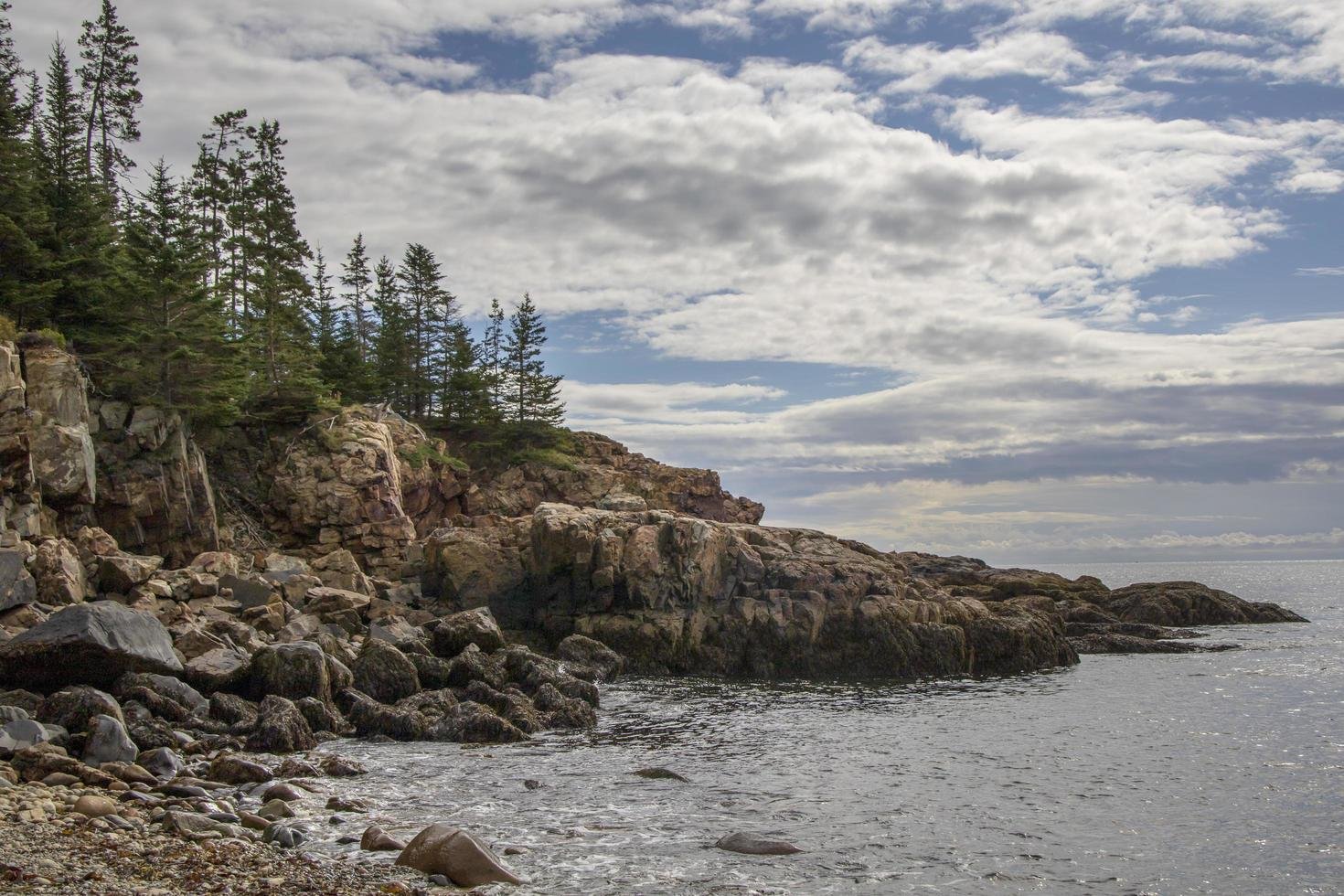
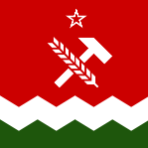




.png.995f4de39fd4d2cf4f5aa2ba1c4c410c.png)
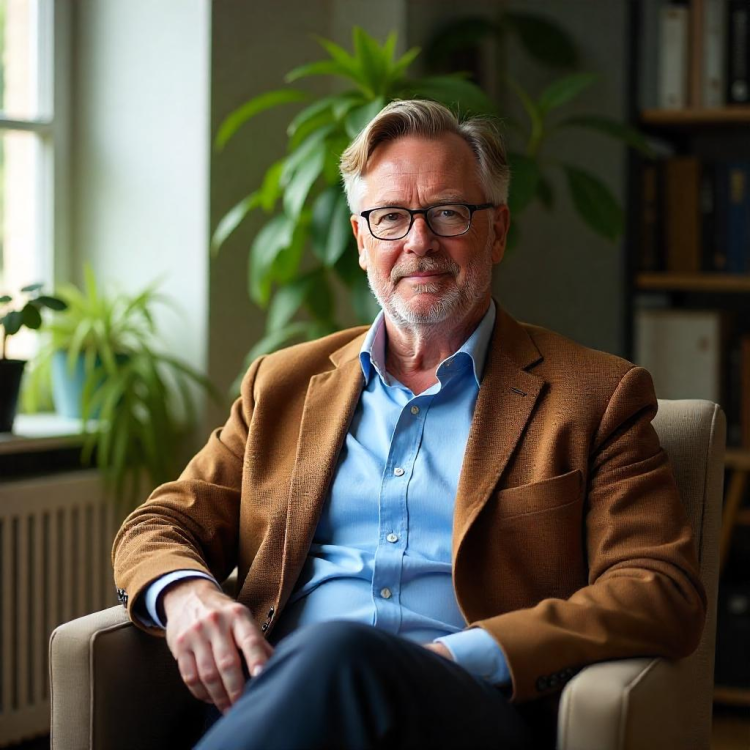


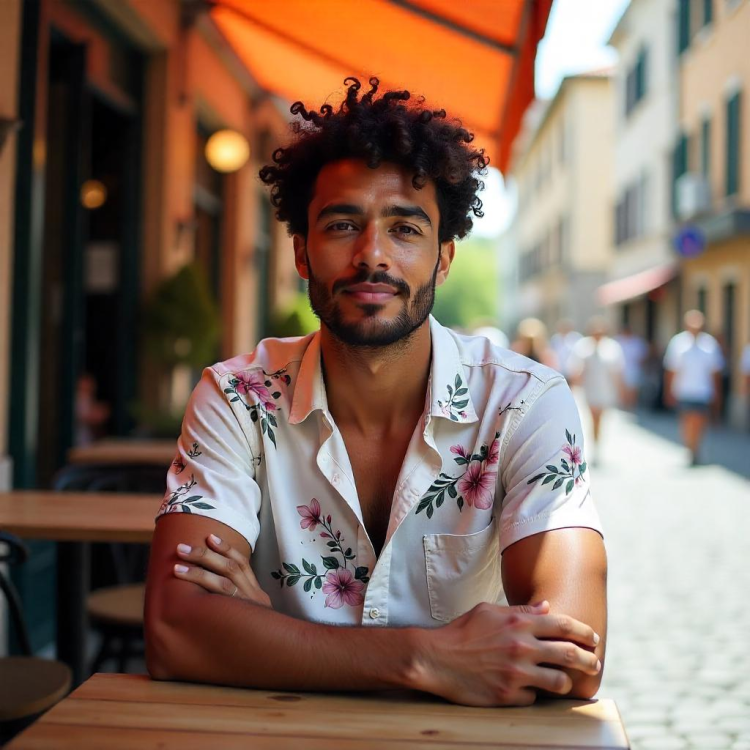
.png.61ac3020c4bebf5bdc6d51cf390c832e.png)
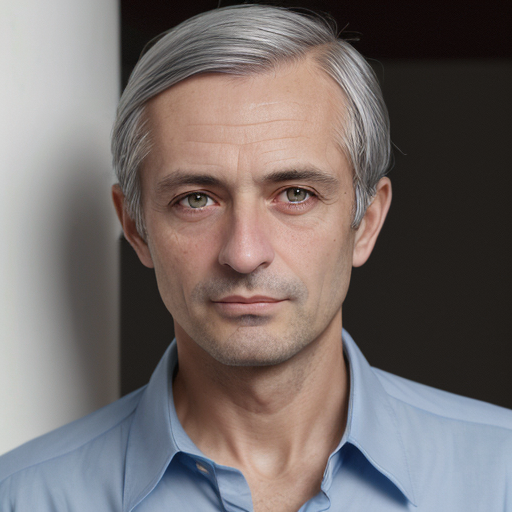
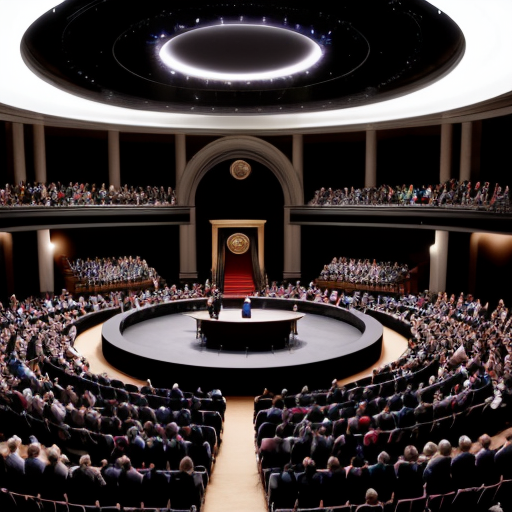

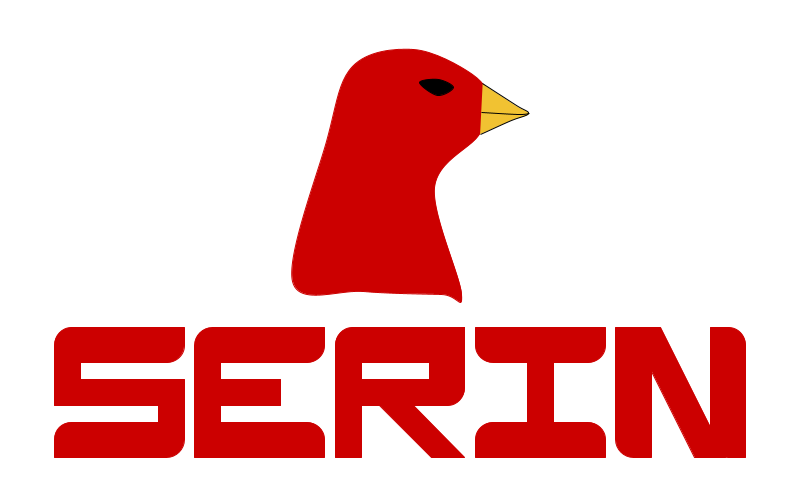
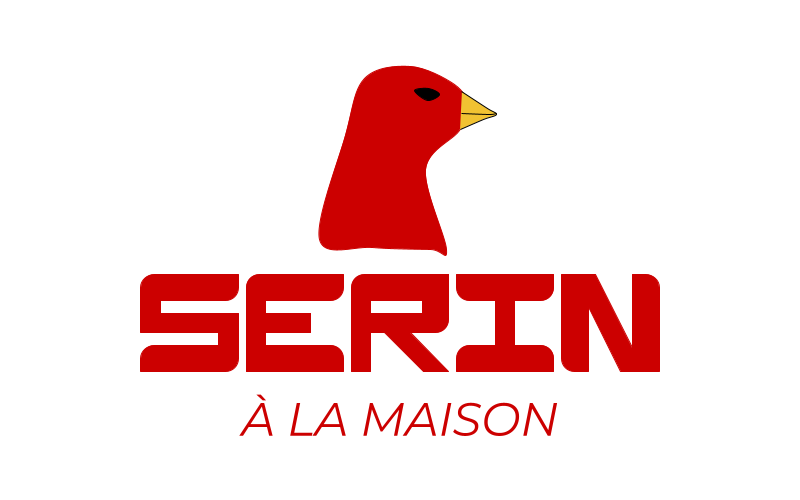

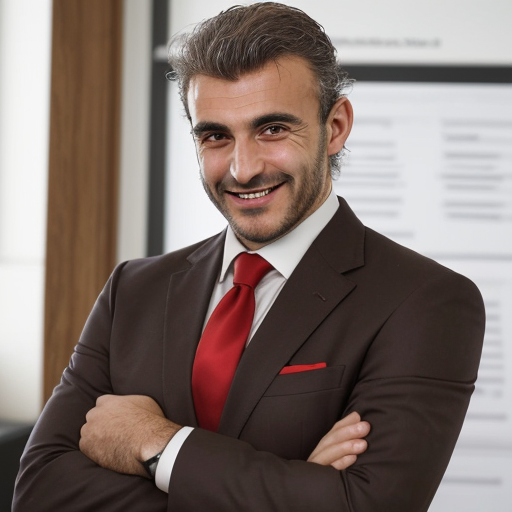

.png.605e5593161d18c77eb4c5091ad6e121.png)
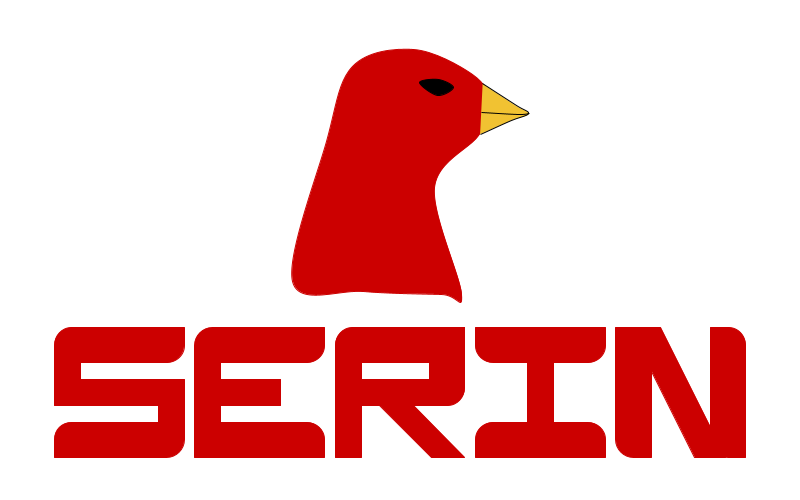
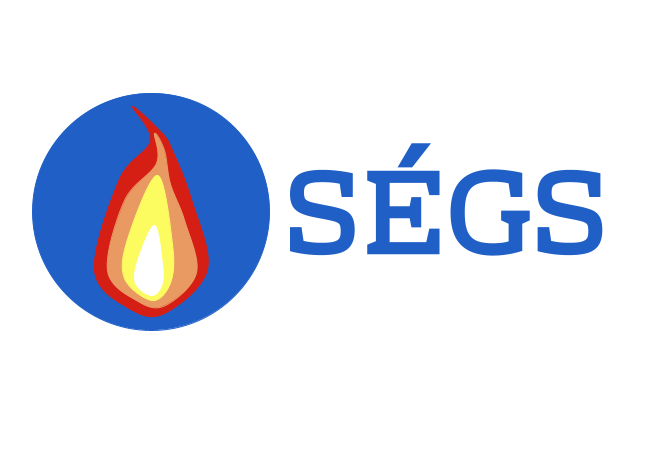
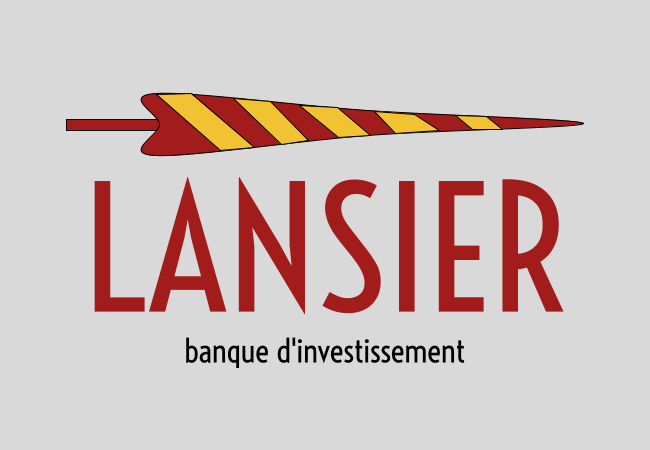
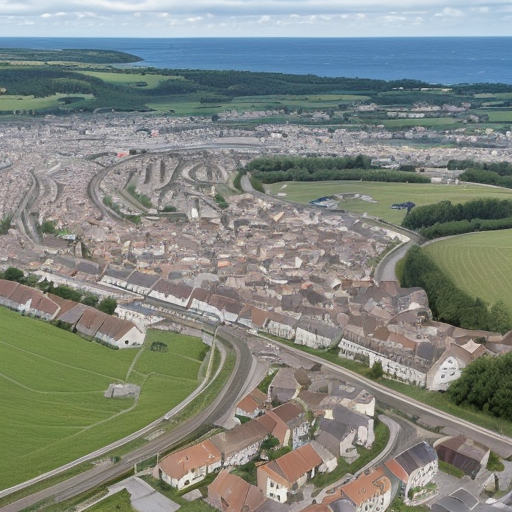
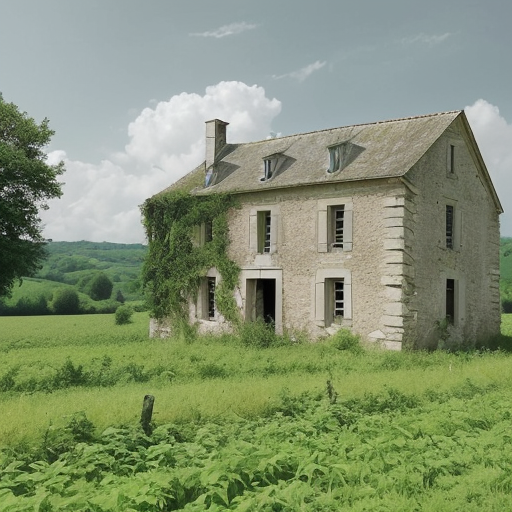
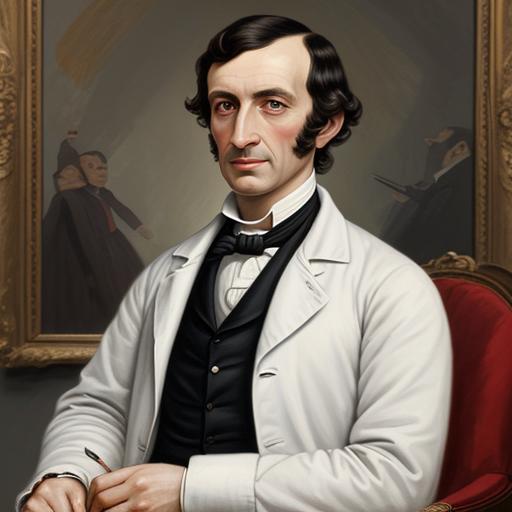
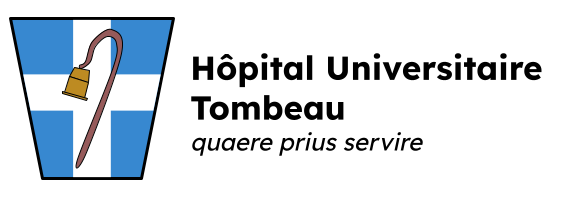
.png.2f468ec1f717ff3abea76633fc3cd237.png)

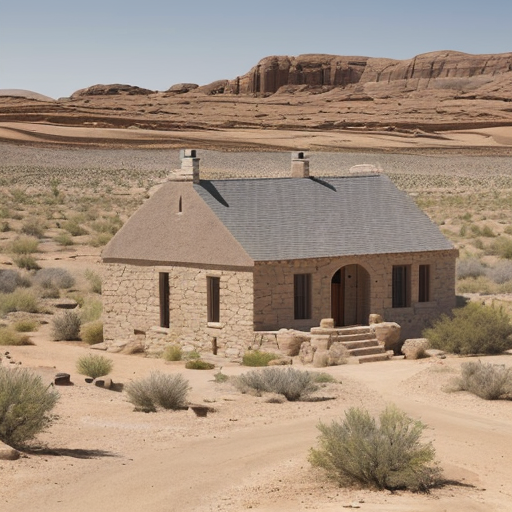


.png.b537989e2e933333b09e2837ff7887f4.png)